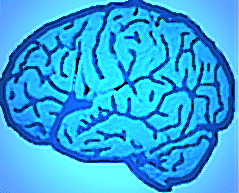
Neuroscience: A Journey Through the Brain
 |
Neuroscience: A Journey Through the Brain |
| Main Page Organization Development Neuron Systems About the site (Glossary) References |
About the site
This site is designed to give any interested student an overview of basic concepts in Neuroscience. Each section is illustrated with animations and custom graphics to help students visualize the concepts. The Glossary provides definitions of many of the major topics covered in this site as well as others that often appear when discussing neuroscience. The Links section provides links to other web resources for each topic, as well as several knowledge-testing quizzes. High school students may use this resource as a more in depth look at many of the topics covered in Biology 30. In the Alberta K-12 curriculum for Biology 30, the learner outcomes related to Neuroscience begin on page 43 of 70 and include the following:
describe the structure and function of a neuron and myelin sheath, explaining the formation and transmission of an action potential and the transmission of a signal across a synapse or neuromuscular junction and the main chemicals and transmitters involved
describing the composition and function of a simple reflex arc and the organization of neurons into nerves
identifying the principal structures of the central and peripheral nervous systems and their functions in regulating the voluntary (somatic) and involuntary (autonomic) systems of the human organism
explaining how human organisms sense their environment and their spatial orientation in it; e.g. auditory, visual, skin receptors, olfactory, proprioceptors
Many prospective students are interested to find out what sort of topics Neuroscience courses at the University of Alberta cover. Other students may need to learn basic Neuroscience principles for a variety of courses, and this site is constructed to illustrate many of the basic concepts of Neuroscience.
Courses at the U of A that focus on Neuroscience include: Psychology 275, 371, 377, 475, 478; Physiology 210/211, 372, 401, 402, 403, 444, 527; Neuroscience 443, 450, 451, 452, 472; Psychiatry 511; Pharmacology 371, 407, 412, 509, 512; Zoology 342. Other related courses include Botany 380 (Drug Plants of the World) and Pharmacology 305 (An Introduction to the Pharmacology of Drug Abuse).
Check out the following sections of the University calendar for more details on the above courses:
Botany
Courses
Neuroscience courses
Pharmacology Courses
Physiology Courses
Psychiatry Courses
Psychology Courses
Zoology Courses
Created and Maintained by: Melissa
Davies
Last Updated: April 10, 2002 09:00 AM